Jamaica, a vibrant island pulsating with rich cultural beats, encapsulates a mesmerizing fusion of African and European influences in its traditional dances. Within this kaleidoscope of rhythmic expressions, each dance narrates a unique story, embodying the spirit of a community and celebrating moments both joyous and solemn.
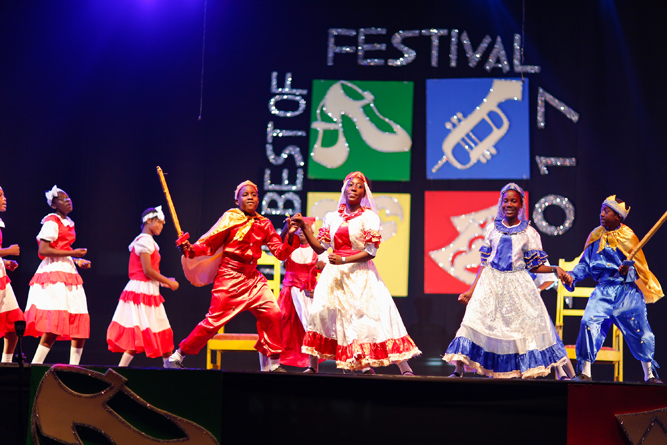
Bruckins: Where Heritage Dips and Glides
As a distinguished member of the creolized dance genre, Bruckins emerges as a stately revelry. Its choreography, marked by the distinctive "thrust and recovery" motion of the hip and leg, mirrors the confluence of African and European traditions. Originally performed to commemorate Emancipation from slavery on August 1, 1838, Bruckins weaves a tale of resilience through its graceful movements.
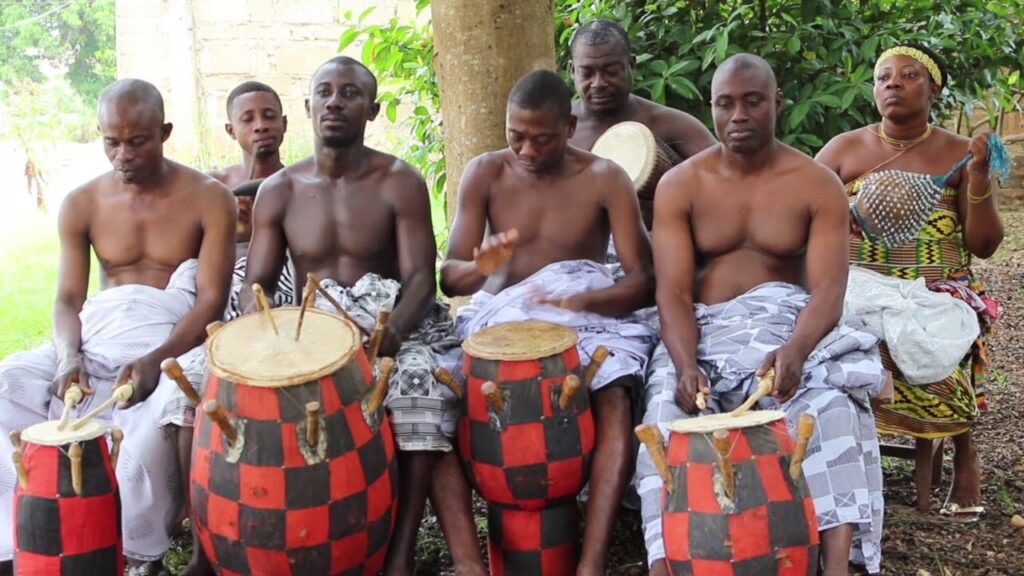
Burru: Fertility Masquerade in Lionel Town
Nestled in Lionel Town and Hayes (Clarendon), Burru takes center stage as a fertility masquerade akin to Jonkunnu. Characterized by deliberate hip rotations and intermittent jumps, this dance exudes primal energy, celebrating life and fertility. Its roots intertwine with the vibrant traditions of Jonkunnu, creating a spectacle of movement and expression.

Dinki Mini: Nightly Celebrations in St. Mary
In the eastern parish of St. Mary, the vibrant Dinki Mini unfolds its lively performance during 'Nine-Night' sessions held after a person's passing. Both male and female dancers partake in suggestive pelvic movements, accompanied by the rhythmic beats of the benta instrument. Dinki Mini serves as a spirited celebration, bringing solace to the bereaved through its dynamic choreography.
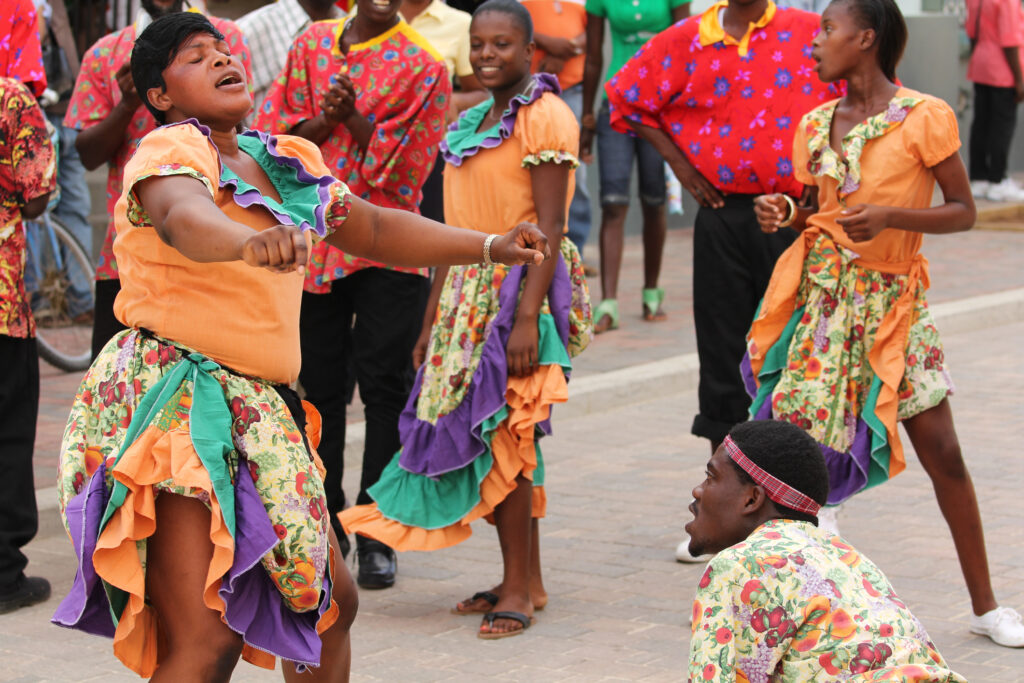
Ettu: Hanover's Sideways Shuffle
Hailing from the parish of Hanover, the Ettu dance emerges as a social African dance, with roots in the Yoruba Tribe. Its distinctive moves involve the lifting and dropping of elbows and shoulders, accompanied by sideways shuffling steps. Sung in a Yoruban dialect, Ettu's short, repetitive songs contribute to a communal celebration of heritage and rhythm.
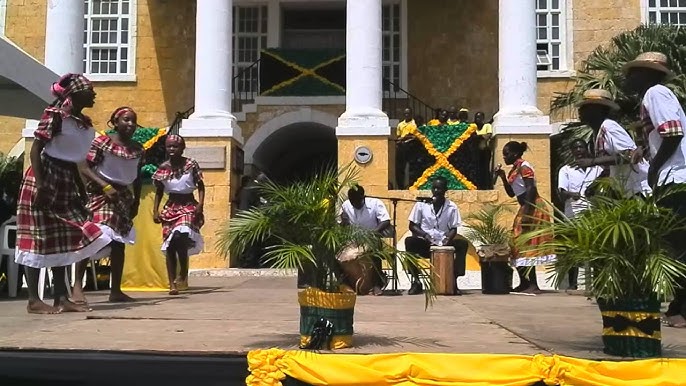
Gerreh: Lively Celebrations After Sunset
Rooted in African traditions, Gerreh takes center stage in lively celebrations held the night after a person's passing. With similarities to Dinki Mini, Gerreh places heightened emphasis on hip movements, predominantly led by female dancers. Pot covers replace the benta, adding a percussive layer to this jubilant dance that seeks to uplift the spirits of the bereaved.
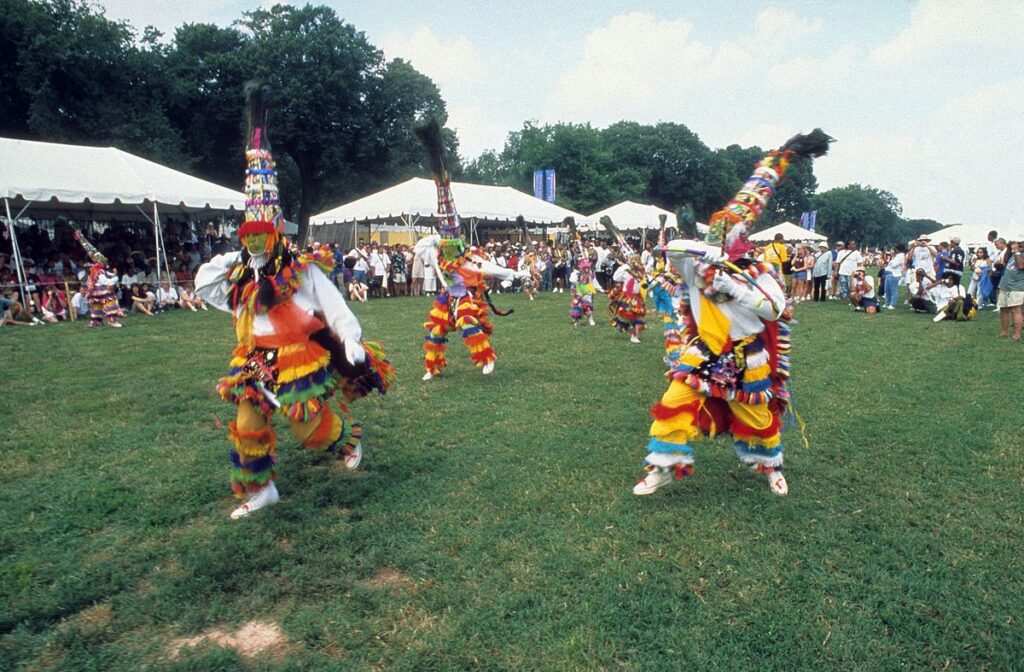
Gumbay: Healing Cult Celebrations in St. Elizabeth
Derived from the Myal healing cult, Gumbay unfolds in the parish of St. Elizabeth. This dance weaves together long steps, vibrating body movements, and wheeling turns, creating a captivating spectacle. Rooted in Maroon traditions, Gumbay includes feats like back-bending and tree climbing during possession, showcasing a dynamic fusion of physical prowess and spiritual expression.
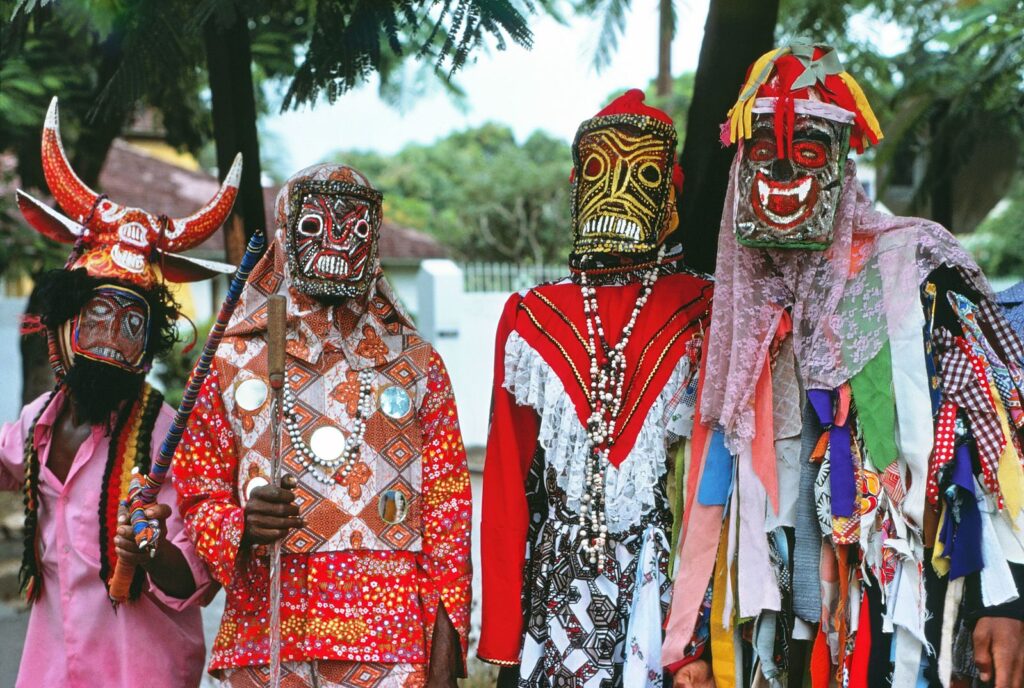
Jonkunnu: A Frightening Spectacle
Jonkunnu, echoing back to the days of slavery, presents a band of masked masqueraders performing during Christmas time. Characters like King and Queen, Cow Head, and Devil add an element of mystery and fear, with elaborate costumes concealing the identities of the performers. The accompanying music, played on fife and drums, resonates with traditional tunes, creating a festive and enigmatic atmosphere.
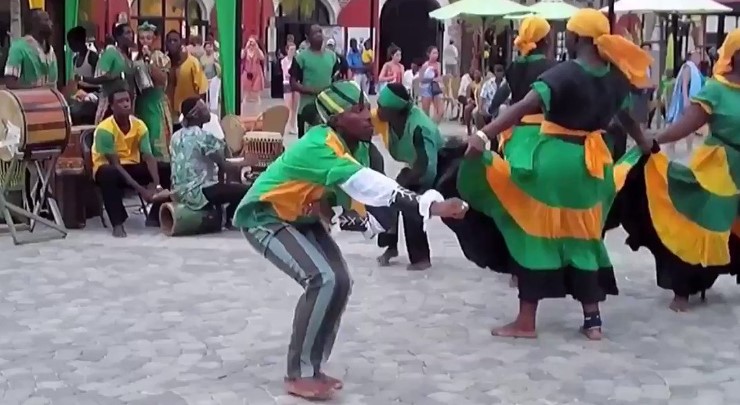
Kumina: Congo Roots in St. Thomas
Originating from Congo, West Africa, Kumina finds a home in the parish of St. Thomas. This religious dance, brought to Jamaica by free Africans, embodies strong African retention in Jamaican folk culture. Celebrating special events like engagements and weddings, Kumina's trio of dancing, singing, and drumming holds a profound significance, with drums believed to have control over spiritual energies.
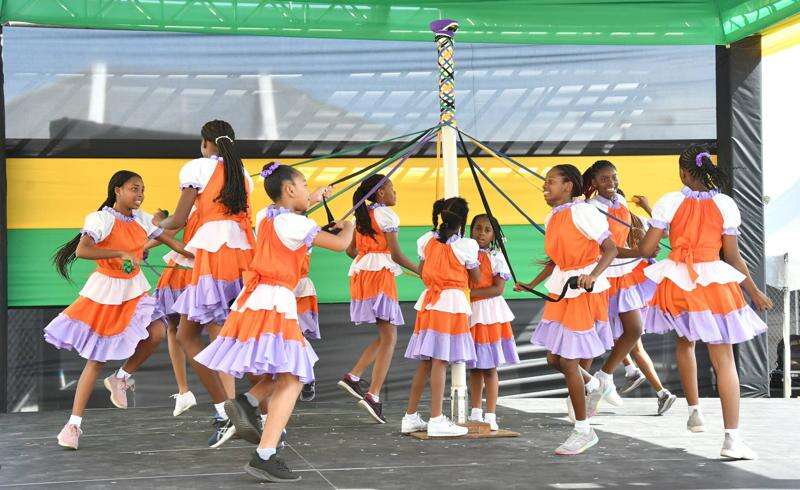
Maypole: Ribbons, Weaves, and Outdoor Festivities
Maypole, reminiscent of old English and Jamaican outdoor festivals, unfolds with the plaiting of colorful ribbons in intricate patterns. From the grand chain to Spider Web, Flair, Dome, and Umbrella styles, Maypole encapsulates the elegance of traditional dances, bringing communities together in festive celebrations.

Myal: Ancient Dance of St. Elizabeth
One of Jamaica's oldest dances, Myal, performed in St. Elizabeth, intertwines with religious observance. Contrary to misconceptions linking it to Obeah, Myal showcases a range of body movements, acrobatic feats, and vibrating motions. With roots deeply embedded in spiritual practices, Myal offers a mesmerizing display of physical and metaphysical expression.
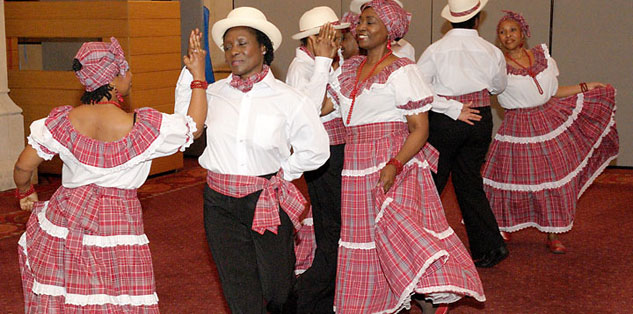
Quadrille: Elegance and Afro-Jamaican Fusion
A coupled dance from the days of slavery, Quadrille unfolds in three distinctive styles - Ballroom, Camp, and Contra. The Ballroom Style mirrors the grace of French and English dances, while the Camp Style infuses Afro-Jamaican elements. Contra Style Quadrille, danced exclusively to Mento music, offers a lively fusion of rhythms and cultural influences.
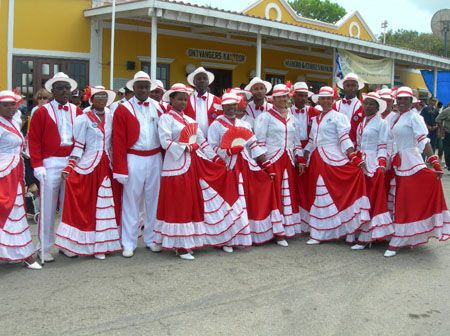
Tambu: Entertaining Rhythms with Couples
Named after the drum, Tambu unfolds as an entertaining dance where couples face each other, moving in a sequence of Shay-shay, Saleone, and Mabumba. The rotating action of hips and shuffling movements set the stage for a lively celebration, where the rhythmic beats of the tambu drum dictate the pace of the dance.
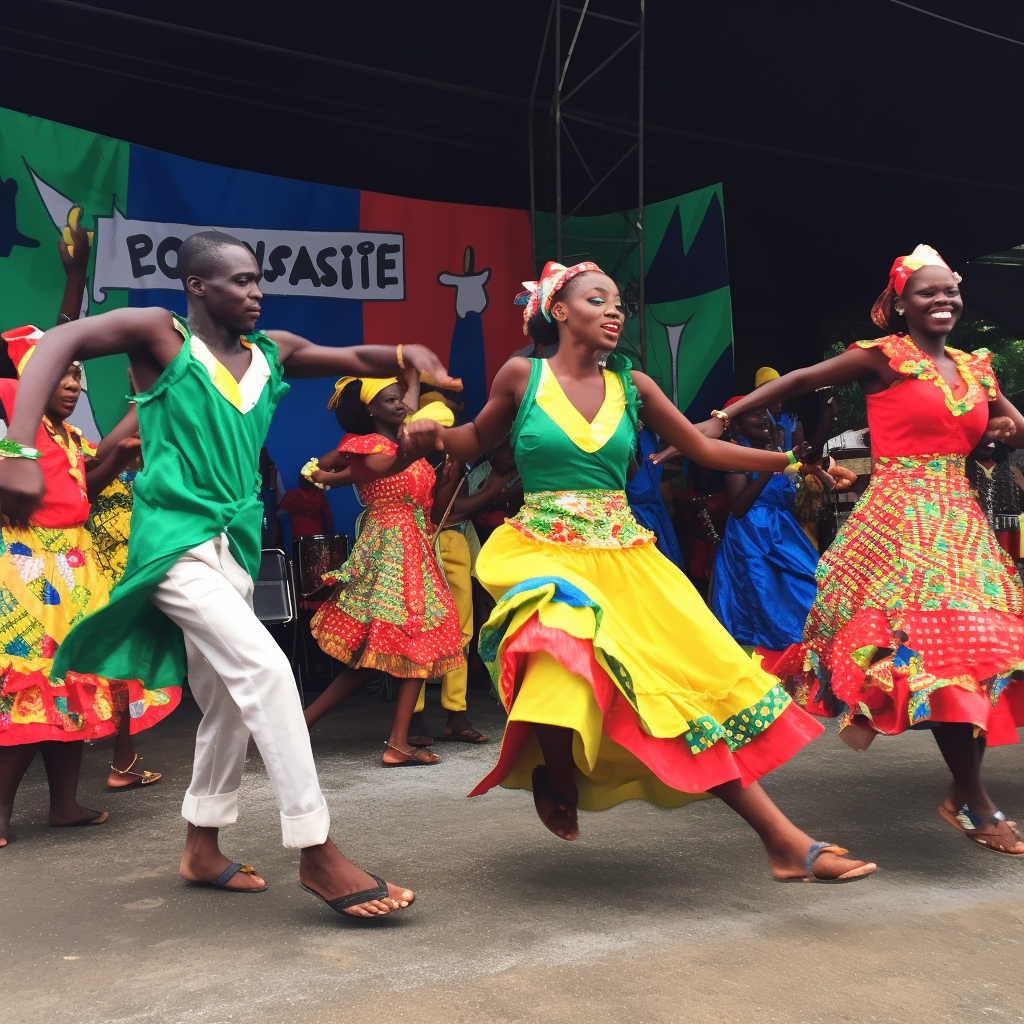
Zella: Portland's Rare Folk Dance
In the shadows of Portland, Zella emerges as a rare folk dance, akin to Dinki Mini but distinguished by the use of Kumina drums. As part of death observances and rituals, Zella remains a lesser-known gem, preserving its unique form and structure within the cultural tapestry of Jamaica.
In the rhythmic heart of Jamaica, each dance becomes a vibrant brushstroke, contributing to a captivating canvas of cultural heritage. These diverse traditions, a testament to the resilience and creativity of the Jamaican people, continue to echo through time, telling stories of joy, sorrow, and the indomitable spirit of a nation.
